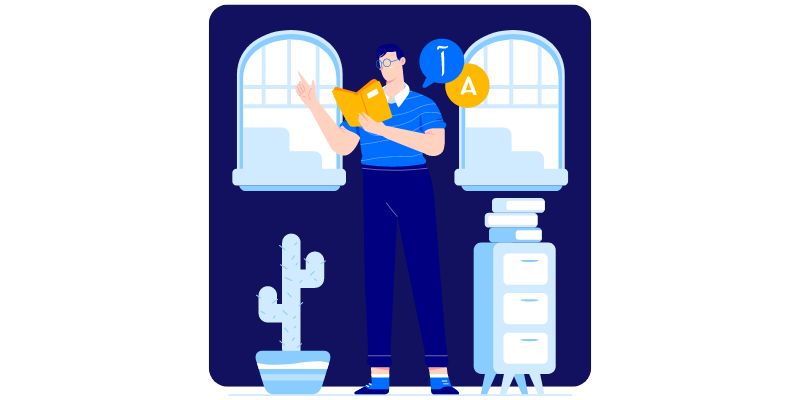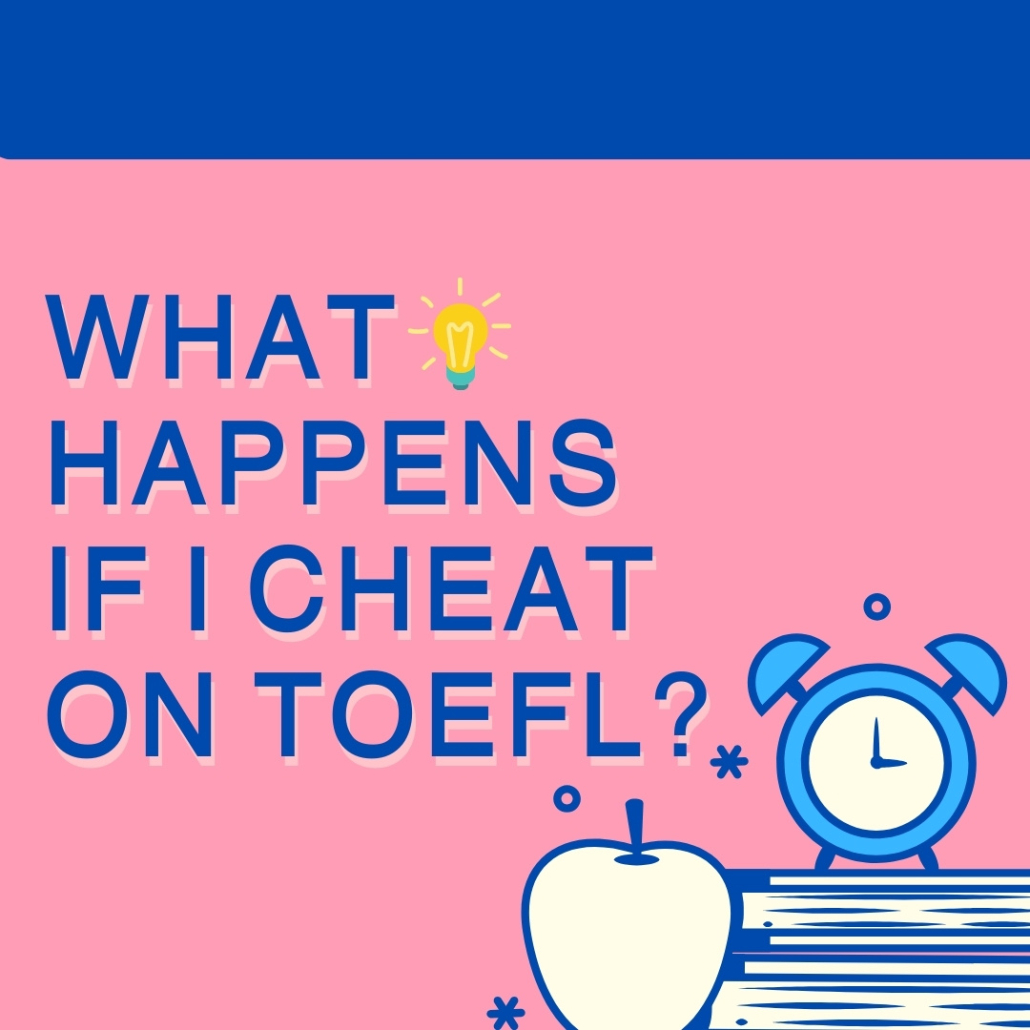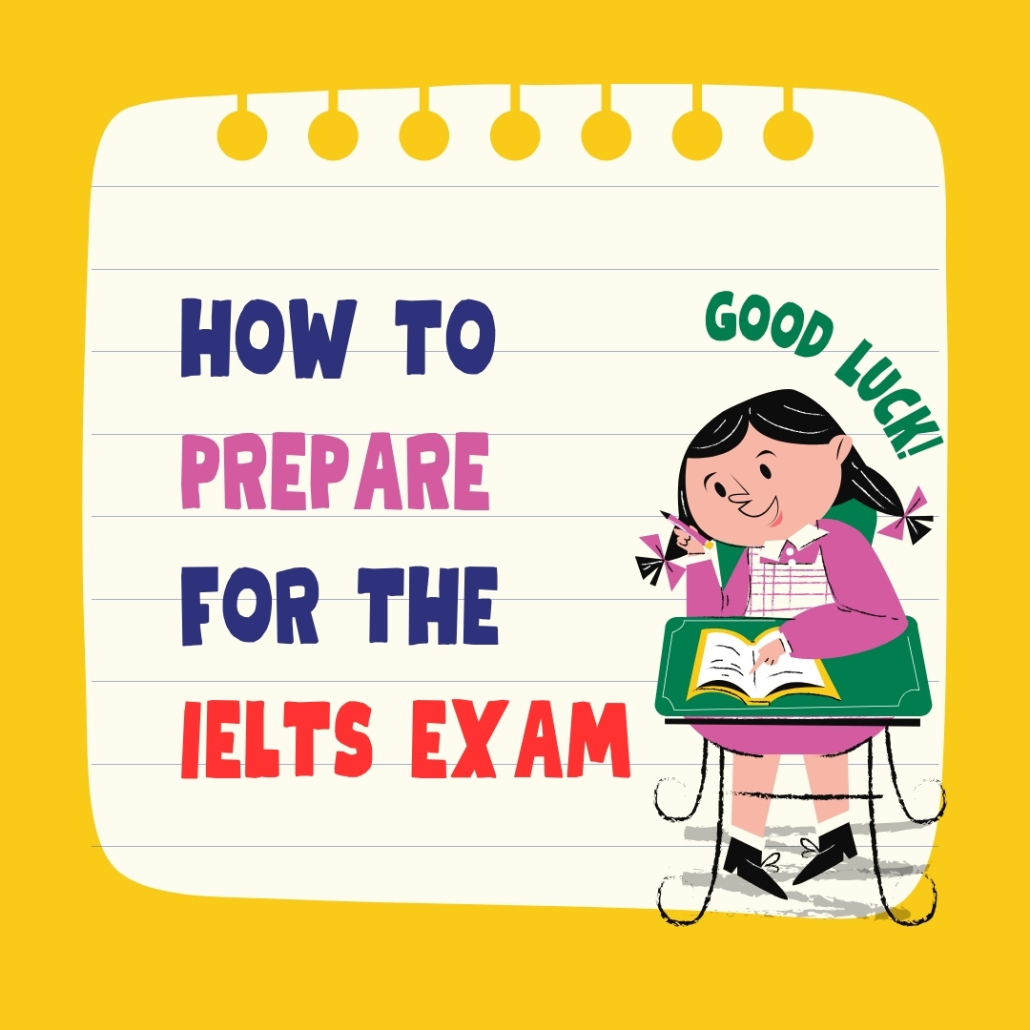
در دنیای پرهیاهوی امروز، توانایی خواندن و درک سریع و دقیق متون متنوع، همانند یک قدرت ماورایی است. این توانایی، شما را در هر زمینهای از تحصیلات عالی تا موفقیتهای حرفهای، یکقدم جلوتر میبرد. آزمون ریدینگ آیلتس، همان ابزاری است که این مهارت حیاتی را میسنجد و به شما کمک میکند تا در مسیر جهانیشدن قدم بگذارید. آیا آمادهاید تا با چالشهای جذاب آزمون ریدینگ آیلتس روبرو شوید و مهارتهای خواندن خود را به سطح جدیدی برسانید؟ پس خواندن را ادامه دهید تا با جزییات و ساختار ریدینگ آیلتس به طور کامل آشنا شوید. در انتها هرآنچه برای موفقیت در این آزمون را نیاز دارید را از طریق آموزش ریدینگ آیلتس به دست خواهید آورد. من ذوالفقاری هستم، نگارنده این مقاله، در انتها هر سوالی که داشتید بپرسید و خدمت شما پاسخ خواهم داد.
ریدینگ آیلتس چیست؟
ریدینگ آیلتس (Reading IELTS) یک بخش حیاتی از آزمون بینالمللی زبان انگلیسی آیلتس است که مهارتهای خواندن و درک مطلب شما را ارزیابی میکند. این بخش شامل 40 سوال است که باید در 60 دقیقه پاسخ داده شوند. ریدینگ به دو نسخه تقسیم میشود: آکادمیک و جنرال. در نسخه ریدینگ آکادمیک آیلتس، متون علمی و دانشگاهی ارائه میشوند؛ درحالیکه در نسخه ریدینگ جنرال آیلتس، متون به موضوعات روزمره و عمومی مرتبط هستند. این آزمون تنوعی از سوالات مانند چندگزینهای، تطبیق اطلاعات و پر کردن جاهای خالی را در بر میگیرد.
اهمیت آزمون ریدینگ آیلتس
آزمون ریدینگ آیلتس نهتنها تواناییهای خواندن شما را محک میزند، بلکه به شما نشان میدهد که چگونه میتوانید اطلاعات پیچیده را سریع و دقیق تجزیهوتحلیل کنید. این مهارت در زندگی تحصیلی و حرفهای شما اهمیت بسیاری دارد. در محیطهای آکادمیک، شما نیاز به درک مقالات پیچیده و متون تخصصی دارید. در محیط کاری، توانایی خواندن و تفسیر گزارشها، ایمیلها و مستندات دیگر، شما را به یک نیروی موثر و کارآمد تبدیل میکند. بهطورکلی، موفقیت در این آزمون نشاندهنده توانایی شما در مدیریت و پردازش اطلاعات به زبان انگلیسی در سطحی بالا است.
ساختار ریدینگ آیلتس
آزمون ریدینگ آیلتس، یکی از ارکان کلیدی ارزیابی مهارتهای زبانی شماست. این بخش از آزمون با طراحی دقیق و هدفمند، تواناییهای خواندن و درک مطلب شما را در زمینههای مختلف بررسی میکند. آشنایی با ساختار دقیق این بخش، به شما کمک میکند تا با اطمینان و تسلط بیشتری در روز آزمون حاضر شوید.
ساختار ریدینگ آیلتس آکادمیک
بخش ریدینگ آیلتس آکادمیک بهگونهای طراحی شده است که توانایی خواندن و تجزیهوتحلیل متون علمی و دانشگاهی شما را میسنجد. در این بخش، سه متن طولانی از کتابها، مقالات علمی و مجلات معتبر دانشگاهی ارائه میشود که شما باید آنها را مطالعه کرده و به سوالات متنوعی پاسخ دهید. هر متن در این بخش، چالشی است که نیازمند دقت بالا، توانایی تحلیل اطلاعات و درک عمیق مفاهیم است.
ویژگیهای کلیدی ساختار ریدینگ آیلتس آکادمیک شامل اطلاعات زیر است:
- نوع متون: متون علمی، دانشگاهی و تخصصی که شامل مقالات، گزارشهای تحقیقاتی و متون علمی از منابع معتبر هستند.
- تعداد سوالات: 40 سوال که در سه بخش مجزا قرار دارند.
- مدتزمان: 60 دقیقه برای پاسخ به تمامی سوالات.
- نوع سوالات: این سوالات شامل انواع مختلفی از جمله چندگزینهای، تطبیق اطلاعات، پر کردن جاهای خالی، سوالات کوتاه پاسخ و سوالات صحیح/غلط هستند. هر سوال طراحی شده است تا شما را وادار به تحلیل عمیق و توجه به جزئیات کند.
ساختار ریدینگ آیلتس جنرال
آزمون ریدینگ آیلتس جنرال برای ارزیابی مهارتهای خواندن در زمینههای روزمره و کاربردی طراحی شده است. این بخش شامل متونی از کتابها، روزنامهها، مجلات، تبلیغات و دستورالعملها است که به موضوعات عمومی و زندگی روزمره مرتبط هستند.
ویژگیهای کلیدی ساختار ریدینگ آیلتس جنرال شامل اطلاعات زیر است:
- نوع متون: متون عمومی و کاربردی که شامل اعلانها، بروشورها، دستورالعملها و مقالات مجلات است.
- تعداد سوالات: 40 سوال که مشابه نسخه آکادمیک، انواع مختلف سوالات چندگزینهای، تطبیق عناوین، شناسایی اطلاعات صحیح/نادرست، تکمیل جملات، و سوالات پاسخ کوتاه را در بر میگیرد.
- مدتزمان: 60 دقیقه برای پاسخگویی به همه سوالات.
- نوع سوالات: سوالات متنوعی از جمله چندگزینهای، تطبیق عناوین، تطبیق اطلاعات، پر کردن جاهای خالی، و سوالات پاسخ کوتاه.
ویژگیهای ساختاری سه متن آزمون ریدینگ آیلتس جنرال
- بخش اول به مهارتهای اجتماعی در زندگی روزمره میپردازد و شامل متون کوتاهی مثل جداول زمانی یا تبلیغات است.
- بخش دوم به مهارتهای اجرایی در محیط کار میپردازد و از متونی مانند قراردادها، دستورالعملهای توسعه و آموزش و شرح وظایف استفاده میکند.
- بخش سوم شامل یک متن طولانیتر و پیچیدهتر در مورد موضوعات عمومی است که ممکن است از کتابها، مجلات یا روزنامهها گرفته شود.
تفاوتهای کلیدی بین ساختار ریدینگ آکادمیک و جنرال
درحالیکه هر دو نسخه آزمون شامل 40 سوال و مدتزمان 60 دقیقه هستند، تفاوتهای اساسی در نوع و محتوای متون وجود دارد. متون آکادمیک بیشتر بر مقالات و گزارشهای علمی تمرکز دارند و نیازمند تحلیل عمیقتر و فهم بیشتر از موضوعات پیچیده هستند. در مقابل، متون جنرال بیشتر به مسائل روزمره و کاربردی پرداخته و درک مطالب روزمره و کاربردی را میطلبند. به عنوان یک داوطلب آزمون آیلتس باید بدانید که در کدام نوع از آزمون شرکت کنید. شناخت دقیق ساختار و نوع سوالات آزمون ریدینگ آیلتس به شما کمک میکند تا با آمادگی بیشتری به آزمون بروید و زمان خود را بهینه مدیریت کنید. این شناخت به شما امکان میدهد تا با تمرکز بیشتری به مطالعه و تمرین بپردازید و در نتیجه، عملکرد بهتری در آزمون داشته باشید.
زمانبندی آزمون ریدینگ آیلتس
همانطور که گفتیم، بخش ریدینگ آیلتس به مدت 60 دقیقه طول میکشد. 40 سوال این بخش به سه بخش تقسیم میشوند که هر بخش شامل یک یا چند متن است. شما باید تمامی سوالات را در این مدتزمان پاسخ دهید و هیچ زمان اضافی برای انتقال پاسخها به برگه پاسخ وجود ندارد؛ بنابراین باید در طول آزمون، مدیریت زمان مناسبی داشته باشید. به شما پیشنهاد میشود برای هر بخش آژمون بیشتر از 20 دقیقه زمان صرف نکنید؛ اما استفاده از زمانبندی زیر به شما کمک میکند:
- بخش اول (15 دقیقه) : سوالات اولیه معمولاً آسانتر هستند و متون کوتاهتر میباشند. سعی کنید این بخش را سریع و بادقت پاسخ دهید تا زمان بیشتری برای بخشهای بعدی باقی بماند.
- بخش دوم (20 دقیقه): این بخش شامل متون متوسط و سوالات کمی پیچیدهتر است. زمان بیشتری را به تحلیل و درک این متون اختصاص دهید.
- بخش سوم (25 دقیقه): این بخش شامل متون بلندتر و سوالات پیچیدهتر است. این بخش نیازمند تمرکز و دقت بیشتری است؛ بنابراین باید زمان بیشتری را به آن اختصاص دهید.
نکات کلیدی برای مدیریت زمان در آزمون ریدینگ آیلتس
مدیریت زمان در آزمون ریدینگ آیلتس بسیار مهم است و میتواند تاثیر زیادی بر نمره نهایی شما داشته باشد. در زیر به چند نکته کلیدی برای مدیریت زمان در این آزمون اشاره میکنیم:
- پیشخوانی سوالات: قبل از شروع به خواندن متن، سوالات مربوطه را سریع مرور کنید تا بدانید به دنبال چه اطلاعاتی هستید.
- استفاده از تکنیک اسکیمینگ و اسکنینگ: از تکنیکهای اسکیمینگ (خواندن سریع برای درک کلی) و اسکنینگ (جستجوی سریع اطلاعات خاص) برای یافتن پاسخ سوالات استفاده کنید.
- تخصیص زمان به هر سوال: حدوداً یک دقیقه و نیم برای هر سوال در نظر بگیرید. اگر سؤالی دشوار بود، آن را رد کنید و به سوال بعدی بروید تا زمان زیادی را صرف یک سوال نکنید.
- مدیریت وقت: هر چند دقیقه یکبار ساعت خود را چک کنید تا مطمئن شوید که از برنامه زمانی خود عقب نیفتادهاید.
- عدم انتقال پاسخها در انتهای آزمون: پاسخها را بهمحض اطمینان به برگه پاسخ منتقل کنید؛ زیرا ممکن است در انتها زمان کافی برای این کار نداشته باشید.
- تمرین و آمادگی: با انجام آزمونهای شبیهسازی و تمرینهای زمانبندی شده، سرعت و دقت خود را در پاسخگویی به سوالات بهبود بخشید.
- تمرکز بر جزئیات: توجه به جزئیات کوچک در متن میتواند کمک زیادی به یافتن پاسخهای درست کند. ازاینرو، بادقت به متن نگاه کنید و کلمات کلیدی را برجسته کنید.
- اجتناب از توقفهای طولانی: اگر در فهم یک قسمت از متن مشکل دارید، وقت خود را تلف نکنید و به قسمت بعدی بروید. میتوانید در انتها به این بخش بازگردید.
با رعایت این نکات، میتوانید بهترین عملکرد را در آزمون ریدینگ آیلتس داشته باشید و نمره مطلوب خود را کسب کنید. البته برای موفقیت بیشتر در آزمون آیلتس، به شما مطالعه تکنیک های ریدینگ آیلتس را پیشنهاد میکنیم.
نحوه امتیازدهی ریدینگ آیلتس
آزمون ریدینگ آیلتس شامل 40 سوال است و هر پاسخ صحیح یک نمره دارد. نمره خام (تعداد پاسخهای صحیح) به نمره باند (Band Score) تبدیل میشود. این نمره بین 0 تا 9 متغیر است و به صورت نیم باند نیز میتواند باشد. برای هر پاسخ صحیح، یک نمره تعلق میگیرد و نمره نهایی براساس تعداد پاسخهای صحیح محاسبه میشود. نمره باند به صورت تقریبی بر اساس جدول تبدیل نمره خام به نمره باند تعیین میشود که در آزمونهای آکادمیک و جنرال متفاوت است.
جدول زیر نشاندهنده چگونگی تبدیل نمره خام به نمره نهایی برای هر بخش از آزمون ریدینگ آیلتس است:
| نمره خام | نمره باند معادل | مفهوم هر نمره از آزمون ریدینگ آیلتس |
|---|---|---|
| 40 | 9 | شخصی که به طور خلاصه و دقیق، توانایی خواندن و درک متون پیچیده را دارد و به تمام جوانب و جزئیات متون مسلط است. |
| 39 | 8.5 | تقریباً مانند بالا اما با توانایی کمی کمتر همراه تسلط بالا در درک و تفسیر متون پیچیده. |
| 38 | 8 | توانایی خوبی در درک متون پیچیده دارد و میتواند متون را بادقت و تمرکز زیادی بخواند. |
| 37 | 7.5 | توانایی خوبی در درک متون دارد و میتواند متون پیچیده را بادقت مناسبی بفهمد. |
| 36 | 7 | میتواند متون معمولی و پیچیده را بادقت خوبی بفهمد و اطلاعات مهم را استخراج کند. |
| 34-35 | 6.5 | توانایی خوبی در درک متون ساده و معمولی دارد و ممکن است با مشکلاتی در متون پیچیده برخورد کند. |
| 32-33 | 6 |
توانایی متوسطی در درک متون دارد و ممکن است در درک جزئیات و تفسیر، دشواری داشته باشد. |
| 30-31 | 5.5 | توانایی معمولی در درک متون معمولی دارد؛ اما ممکن است در متون پیچیده به مشکل برخورد کند. |
| 27-29 | 5 | توانایی متوسطی در درک متون دارد و اطلاعات را با دشواری بیشتری استخراج میکند. |
| 23-26 | 4.5 | توانایی محدودی در درک متون ساده دارد و ممکن است در متون پیچیده نتواند به طور موثر اطلاعات را دریافت کند. |
| 19-22 | 4 | توانایی محدودی در درک متون دارد و اطلاعات را با دشواری بیشتری استخراج میکند. |
| 15-18 | 3.5 | توانایی بسیار محدود در درک متون دارد و تفسیر و استخراج اطلاعات از متن برایش دشوار است. |
| 13-14 | 3 | توانایی بسیار محدود در درک متون دارد و ممکن است اطلاعات زیادی از متون را نفهمد. |
| 10-12 | 2.5 | توانایی بسیار محدودی در درک متون دارد و تفسیر و استخراج اطلاعات از متن برایش به طور کامل ممکن نیست. |
| 8-9 | 2 |
توانایی بسیار محدودی در درک متون دارد و اطلاعات را به طور کامل نفهمیده. |
| 6-7 | 1.5 | توانایی در درک متون ندارد و ممکن است اطلاعات زیادی را از متون نفهمد. |
| 4-5 | 1 | توانایی بسیار محدودی در درک متون دارد و اطلاعات را به طور کامل نفهمیده. |
|
0-3 |
0 |
شخص آزمون را انجام نداده است و بنابراین هیچ نمرهای برای این بخش از آزمون در نظر گرفته نمیشود. |
معیارهای امتیازدهی ریدینگ آیلتس
معیارهای امتیازدهی آزمون ریدینگ آیلتس شامل موارد زیر است:
تعداد پاسخهای صحیح: هر پاسخ صحیح یک نمره دارد و هیچ نمرهای برای پاسخهای نادرست کسر نمیشود.
درک مطلب: توانایی درک دقیق و صحیح متن و پاسخ به سوالات بر اساس اطلاعات ارائه شده در متن.
دقت در پاسخگویی: دقت در پر کردن برگه پاسخنامه و اطمینان از انتقال صحیح پاسخها از دفترچه سوال به برگه پاسخ.
مدیریت زمان: توانایی مدیریت زمان بهگونهای که تمام سوالات در زمان تعیین شده پاسخ داده شوند.
مهارتهای زبانی: توانایی تشخیص و استفاده از کلمات کلیدی و مفاهیم مهم در متن برای پاسخ به سوالات.
انواع سؤالهای آزمون ریدینگ آیلتس
ریدینگ آیلتس شامل سه قسمت (سه بخش) است، هر بخش شامل انواع مختلفی از سوالات است که بهصورت تستی و چندگزینهای ارائه میشوند. این انواع سوالات عبارتاند از:
شناسایی اطلاعات (True/False/Not given)
در این نوع سوالات، چندین عبارت به شما داده میشود و از شما پرسیده میشود: “آیا عبارات زیر با اطلاعات موجود در متن مطابقت دارد؟” شما باید کلمات “True” (درست)، “False” (نادرست) یا “Not given” (نه تأیید شده و نه رد شده) را در پاسخنامه خود بنویسید. مهم است که تفاوت بین “False” و “Not given” را درک کنید. “False” به معنای این است که عبارت با اطلاعات متن مغایرت دارد. “Not given” به معنای این است که عبارت نه با اطلاعات موجود موافق است و نه با آن مغایرت دارد. شما باید مواظب باشید که از هیچ اطلاعاتی که از قبل در مورد موضوع متن میدانید استفاده نکنید.
این نوع سوالات توانایی شما را در شناسایی اطلاعات خاص داده شده در متن آزمایش میکند.
شناسایی دیدگاهها/ادعاهای نویسنده (Yes/No/Not given)
در این نوع سوالات، چندین عبارت به شما داده میشود و از شما خواسته میشود: “آیا عبارات زیر با دیدگاهها یا ادعاهای نویسنده موافقت دارد؟” یا “آیا عبارات زیر با دیدگاهها یا ادعاهای نویسنده مغایرت دارد؟” شما باید “Yes” (بله)، “No” (خیر) یا “Not given” (نه تأیید شده و نه رد شده) را در پاسخنامه خود بنویسید. مهم است که تفاوت بین “No” و “Not given” را درک کنید. “No” به معنای این است که عبارت با دیدگاه یا ادعای نویسنده در تناقض است. “Not given” به معنای این است که عبارت نه با دیدگاه یا ادعای نویسنده موافق است و نه با آن مغایرت دارد. شما باید مواظب باشید که از هیچ اطلاعاتی که از قبل در مورد موضوع متن میدانید استفاده نکنید.
این نوع سوالات توانایی شما را در شناسایی نظرات و ایدهها آزمایش میکند.
تطابق اطلاعات (Matching Information)
در این نوع سوالات، شما باید اطلاعات خاصی را در بندهای (بخشهای) متن پیدا کنید. پاراگرافها (بخشها) با حروف (A، B، C و غیره) شناسایی میشوند. شما باید حروف بندهای (بخشهای) صحیح را در پاسخنامه خود بنویسید. ممکن است هر بند (بخش) بیشتر از یکبار استفاده شود و برخی پاراگرافها (بخشها) استفاده نشوند. درصورتیکه امکان استفاده بیش از یکبار از پاراگرافها (بخشها) وجود داشته باشد، در صورت سوال، خواهید دید “میتوانید هر حرف را بیش از یکبار استفاده کنید”.
این نوع سوالات توانایی شما را در اسکن متن برای یافتن اطلاعات خاص آزمایش میکند.
تکمیل خلاصه / یادداشت / جدول / نمودار (Summary/Note/Table/Flow Chart Completion)
در این نوع سوالات، شما یک خلاصه از بخشی از متن را دارید و باید آن را با استفاده از کلماتی مناسب از متن پر کنید. توجه داشته باشید که خلاصه معمولاً به قسمتی از متن میپردازد نه کل متن. خلاصه میتواند بهصورت متن پیوسته (که در سوال به آن “Summary” میگویند)، چندین نکته (که در صورت سوال به آن “Note” میگویند)، جدول با بخشهای خالی (که در صورت سوال به آن “ Table” میگویند) یا یکرشته نمودار یا مراحل مرتبط (که در سوال به آن ” Flow Chart” میگویند) استفاده میشود.
این نوع سوالات توانایی شما را در درک جزئیات یا ایدههای اصلی یک بخش از متن آزمایش میکند.
تطابق ویژگیها (Matching Features)
در این نوع سوالات، شما باید یکرشته عبارات یا اطلاعات را با یک فهرست از گزینهها مطابقت دهید. گزینهها یک گروه از ویژگیها از متن هستند و با حروف (A، B، C و غیره) شناسایی میشوند. شما باید حرف صحیح را بر روی برگه پاسخدهی خود بنویسید. ممکن است برخی از گزینهها استفاده نشوند و دیگران ممکن است بیش از یکبار استفاده شوند. درصورتیکه امکان استفاده بیش از یکبار از هر گزینه وجود داشته باشد، در صورت سوال خواهید دید که “میتوانید هر گزینه را بیش از یکبار استفاده کنید”.
این نوع سوالات توانایی شما را در شناسایی روابط و اتصالات بین حقایق در متن و توانایی شناسایی نظرات و عقاید آزمایش میکند.
تطابق عناوین (Matching Headings)
در این نوع سوالات، یک فهرست از عناوین وجود دارد که با اعداد رومی (i، ii، iii و غیره) شناسایی میشوند. هر عنوان خلاصهای از موضوع اصلی یکبند یا بخش از متن است. شما باید عنوان مناسب را با بند یا بخش متن متناظر کنید. پاراگرافها (بخشها) با حروف (A، B، C و غیره) شناسایی میشوند. شما باید اعداد رومی صحیح را در پاسخنامه خود بنویسید. همیشه عناوین بیشتری از پاراگرافها یا بخشها وجود دارند، بنابراین بعضی از عناوین استفاده نخواهند شد و احتمالاً برخی از پاراگرافها یا بخشها نیز در سوال شامل نخواهند شد.
این نوع سوالات توانایی شما را در شناسایی موضوع کلی یک پاراگراف (بخش) و تشخیص تفاوت بین ایده اصلی و ایده پشتیبانی آزمایش میکند.
چندگزینهای (Multiple Choice Questions)
در این نوع سوالات، ممکن است با یک سوال به همراه چهار گزینه یا نیمه اول یک جمله همراه با چهارپایان برای انتهای جمله، مواجه شوید. شما باید یک پاسخ صحیح (A، B، C یا D) را انتخاب کنید و سپس پاسخ صحیح را بر روی برگه پاسخدهی خود بنویسید. گاهی اوقات فهرستی طولانی از پاسخهای ممکن داده میشود و شما باید بیش از یک پاسخ را انتخاب کنید. برای اطمینان از تعداد پاسخهای موردنیاز، سوال را بادقت بخوانید.
این نوع سوالات تواناییهای مختلفی از قبیل: درک دقیق نکات خاص یا درک کلی از نکات اصلی متن را آزمایش میکنند.
تکمیل جمله (Sentence Completion)
در این نوع سوالات، شما باید یک جای خالی در هر جمله را با انتخاب کلمات از متن پر کنید. شما باید کلمات انتخابی خود را بر روی برگه پاسخنامه خود بنویسید. تعداد کلمات یا اعدادی که برای پر کردن جاهای خالی استفاده میشود، ممکن است متغیر باشد و شما باید دقیقاً تعداد کلمات یا اعدادی که در دستور تکمیل جمله آمده است را رعایت کنید. بهعنوانمثال، “حداکثر دوکلمه و / یا یک شماره” یا “حداکثر سه کلمه”.
این نوع سوالات توانایی شما را در یافتن جزئیات و اطلاعات خاص در متن آزمایش میکند.
تطابق پایان جملات (Matching Sentence Endings)
در این نوع سوالات، شما نیمه اول جمله را خواهید داشت و باید بهترین روش برای کاملکردن جمله را از بین فهرستی از پایانهای ممکن انتخاب کنید. پایانها با حروف (A، B، C و غیره) شناسایی میشوند. تعداد پایانها بیشتر از آغاز جملات خواهد بود؛ بنابراین شما از همه آنها استفاده نخواهید کرد. شما باید حرفی که انتخاب میکنید را بر روی برگه پاسخدهی خود بنویسید.
این نوع سوالات توانایی شما را در درک ایدههای اصلی در متن آزمایش میکند.
تکمیل دیاگرام (Diagram Label Completion)
در این نوع سوالات، شما باید یک دیاگرام را کامل کنید. دیاگرام بر اساس توصیفی است که در متن داده شده است. دیاگرام ممکن است یک نوع ماشین، بخشی از یک ساختمان یا اطلاعات دیگری از متن باشد که میتواند از طریق تصاویر نشان داده شود. شما باید کلماتی که در فضای خالیها قرار میگیرند را بر روی برگه پاسخدهی خود بنویسید.
این نوع سوالات توانایی شما را در درک یک توصیف دقیق و جزئی از متن و همچنین درک اینکه اطلاعات چگونه با تصاویر مرتبط است، آزمایش میکند.
سوالات پاسخ کوتاه (Short-answer Questions)
در این نوع سوالات، شما باید به سوالاتی درباره جزئیات واقعی در متن پاسخ دهید. شما باید پاسخهای خود را با استفاده از کلمات یا اعداد از متن بنویسید. محدوده کلماتی که برای پر کردن فضای خالی استفاده میشود، ممکن است متغیر باشد. بهعنوانمثال، “نه بیشتر از دوکلمه و / یا یک شماره”.
این نوع سوالات توانایی شما را در یافتن و درک اطلاعات خاص و دقیق در متن آزمایش میکند.
هر کدام از این انواع سوالات در آزمون ریدینگ آیلتس برای ارزیابی مهارتهای خواندن، درک و تفسیر متون مورداستفاده قرار میگیرند. برای موفقیت در آزمون ریدینگ آیلتس، علاوه بر تسلط بر زبان انگلیسی، باید تواناییهای تحلیلی و استدلالی خود را تقویت کنید. با تمرین مستمر و استفاده از منابع معتبر، میتوانید مهارتهای لازم را کسب کرده و به نمره مطلوب خود دست یابید.
نمونه سوال آزمون Reading آیلتس
بهترین روش برای آشنایی با ساختار ریدینگ آیلتس و نیز سنجش مهارتهای خود، استفاده از یک نمونه سوال آزمون واقعی آیلتس است. در زیر میتوانید یک متن که از آزمون آیلتس آکادمیک انتخاب شده است را ببینید. گفتنی است که در سمپل ریدینگ آیلتس زیر میتوانید انواع سوالات ریدینگ را ببینید.
Read the passage and answer Questions 1-13
What if everything had a barcode?
A vast new database will let us catalogue every plant and animal on the planet, and identify them in seconds. Sanjida O’Connell reports
1 Imagine going for a walk and spotting a wild flower. Its beauty and fragrance delight you, but the name eludes you. No problem. You whip out a hand-held scanner, about the size of a mobile phone, and pop a fragment of a leaf into the device. A few seconds, and the read-out tells you that you’re looking at a pyramidal orchid. Satisfied, you continue on your way.
2 Sound far-fetched? Not at all. Scientists are currently creating a DNA barcode for every species of plant and animal on the planet. It won’t be long before everyone, from experts to amateurs, will be able to scan the world’s flora and fauna as if they were checking out groceries at a supermarket, to look up or confirm their identities.
3 There are numerous practical uses too. Such a device would let you scan fish at the fishmonger’s to check if it’s been labelled properly, work out exactly what is in your mixed vegetable soup, and confirm whether a piece of furniture really has come from a renewable forest, as the retailer claims. It would also assist forensic science teams, who could quickly identify the pollen on a suspect, to link him to a particular location; customs officials, in their efforts to prevent disease-carrying pests being taken across national borders; and environmental inspectors assessing water quality, who need to work out what microbes are lurking in a particular sample.
4 It was Professor Paul Hebert, a biologist from the University of Guelph in Canada, who came up with the idea of DNA barcoding the natural world. The inspiration came while he was walking up and down the aisles of a supermarket, marvelling at the ability of the store to keep track of all the lines stocked and sold using the thick and thin lines that make up a barcode. Could scientists, he wondered, exploit a barcode system to record the millions of species on earth via their DNA?
5 The compilation of a planetary inventory began more than 250 years ago, with the Swedish life classifier Carl Linnaeus. In 1758, he founded the science of taxonomy – a method of classifying living things – based on physical and behavioural characteristics. To date, scientists have classified about 1.7 million organisms, a small fraction of the total number of species, which has been estimated at anywhere between 5 and 30 million. But taxonomy is difficult and time-consuming. Many species, such as the different kinds of flies, look remarkably similar. Only an expert who has spent years examining a particular group can distinguish one from another. Even the experts may be stumped, however, when presented with an egg, an embryo, a seedling or a root. The next problem is that we are running out of time in which to complete the inventory. The International Union for the Conservation of Nature estimates that a quarter of the world’s population of mammals are threatened with extinction.
6 So, Hebert’s idea centred on finding a fragment of DNA that would disclose the identity of a species without having to decode its entire genetic code. He envisaged a ‘DNA barcode reader’, similar to the scanners at retail checkouts. Outlining his idea in Scientific American, Hebert writes: ‘An inspector at a busy seaport, a hiker on a mountain trail, or a scientist in a lab could insert a sample containing DNA – a snippet of whisker, say, or the leg of an insect – into the device, which would detect the sequence of nucleic acids in the barcode segment. This information would be instantly relayed to a reference database, a public library of DNA barcodes. Anyone, anywhere, could identify species.’
7 To create the barcode, Hebert proposed the use of a section of DNA, from the energy-producing units found in all cells. He selected a gene that gives rise to an enzyme known as CO1. This gene is small enough to be quickly and easily deciphered, but has sufficient variation for us to be able to tell most animal species apart. You and I, for instance, will have different versions of CO1, but they will be similar enough to show that we’re both humans and not chimpanzees.
8 In 2003, Hebert and his team published their first results. They showed that the barcode system could identify the group an animal came from (for example, whether it was a vertebrate, a worm or an insect) and even the species when it was stored in the barcode library. After five more years of work, results indicate that animals can now be identified by their barcodes in 98 per cent of cases. Early results have confirmed the additional benefits of the new system: for example, caterpillars of the tropical butterfly Astraptes fulgerator, which was first recognised as a species in 1775, all look very similar, and were assumed to belong to a single species. Barcoding has shown there are 10 different kinds.
9 Of course, the value of the system depends on a comprehensive reference library of the DNA (CO1) barcodes of established species. The Barcode of Life Data (Bold) systems is an enormous international collaboration supported by 150 institutions in 45 countries. To date, it has compiled more than 500,000 records from 50,000 species. The consortium is hoping that the world’s birds will be barcoded by 2011. ‘People have watched birds for so long that they might think every different tweet has been heard, every different colour observed, but barcoding may prove otherwise,’ says Professor Mark Stoeckle, professor of the human environment at Rockefeller University, New York, who works with Hebert. He estimates that out of the world’s 10,000 bird species, DNA barcoding will distinguish at least 1,000 new ones.
IELTS READING QUESTIONS
Questions 1 to 3
Choose NO MORE THAN ONE WORD AND/OR A NUMBER from the passage for each answer.
Write your answers in boxes 1-4 on your answer sheet.
Problems with taxonomy
only 1…….species have been classified so far
difficult to distinguish between species of certain creatures, for example 2…….
possibility of a large number of species of 3…….dying out soon
Questions 4 – 8
Complete the flow-chart below.
Choose NO MORE THAN THREE WORDS AND/OR A NUMBER from the passage for each answer. Write your answers in boxes 4-8 on your answer sheet.
Hebert’s system
decided to create a device called a 4……., like ones used in shops
↓
chose a 5……. that produces a substance called CO1
↓
samples of CO1 read by the device and matched with those kept in the 6…….
↓
current results show that 7……. of animal species can be identified in this way
↓
results show different species being identified, eg of 8…….
Questions 9 – 13
Do the following statements agree with the information given in Reading Passage 1?
TRUE – if the statement agrees with the information
FALSE – if the statement contradicts the information
NOT GIVEN – if there is no information on this
9 The writer believes that the barcode system will be widely used by the general public.
10 It is likely that the barcode device will show that many foods and goods have not been correctly described.
11 Hebert got the idea for DNA barcoding from someone who worked at a supermarket.
12 The number of organisations supporting Hebert’s barcoding project is growing all the time.
13 A large number of new bird species have already been identified by the DNA barcode system.
نمونه پاسخ آزمون ریدینگ آیلتس
در ادامه میتوانید پاسخ ریدینگ بالا را ببینید.
- 1.7 million
- Flies
- Mammals
- DNA barcode reader
- Gene
- barcode library
- 98 per cent / 98%
- caterpillars
- TRUE
- NOT GIVEN
- FALSE
- NOT GIVEN
- FALSE
پس از پایانبخش اول در ریدینگ آیلتس باید به مطالعه متن دوم بپردازید. در زیر یک نمونه سوال دیگر را میتوانید ببینید.
Read the passage and answer Questions 14 – 2
Giving The Brain A Workout
Mental agility does not have to decline with age, as long as you keep exercising your mind, says Anna van Praagh.
A Use your brain and it will grow – it really will. This is the message from neuropsychologist Ian Robertson, professor of psychology at Trinity College, Dublin and founding director of the university’s Institute of Neuroscience. His book, Puzzler Brain Trainer 90-Day Workout, contains puzzles which he devised to stretch, sharpen and stimulate the brain. The puzzles, from ‘memory jogs’ to Sudoku to crosswords to number games are all-encompassing, and have been specially formulated to improve each and every part of the brain, from visual-spatial ability to perception, attention, memory, numerical agility, problem-solving and language.
B Professor Robertson has been studying the brain for 57 years, in a career dedicated to changing and improving the way it works. During this time there has been a remarkable paradigm shift in the way scientists view the brain, he says. ‘When I first started teaching and researching, a very pessimistic view prevailed that, from the age of three or four, we were continually losing brain cells and that the stocks couldn’t be replenished. That has turned out to be factually wrong. Now that we know that the brain is “plastic” – it changes, adapts and is physically sharpened according to the experiences it has.’
C Robertson likens our minds to trees in a park with branches spreading out, connecting and intertwining, with connections increasing in direct correlation to usage. He says that the “eureka” moment in his career – and the reason he devised his ‘brain trainer’ puzzles – was the realisation that the connections multiply with use and so it is possible to boost and improve our mental functions at any age. ‘Now we know that it’s not just children whose brains are “plastic”,’ he says. ‘No matter how old we are, our brains are physically changed by what we do and what we think.’
D Robertson illustrates his point by referring to Dr Eleanor McGuire’s seminal 2000 study of the brains of London taxi drivers. That showed that their grey matter enlarges and adapts to help them build up a detailed mental map of the city. Brain scans revealed that the drivers had a much larger hippocampus (the part of the brain associated with navigation in birds and animals) compared with other people. Crucially, it grew larger the longer they spent doing their job. Similarly, there is strong statistical evidence that, by stretching the mind with games and puzzles, brainpower is increased. Conversely, if we do not stimulate our minds and keep the connections robust and intact, these connections will weaken and physically diminish. A more recent survey suggested that a 20-minute problem-solving session on the Nintendo DS game called ‘Dr Kawashima’s Brain Training’ at the beginning of each day dramatically improved pupils’ test results, class attendance and behaviour. Astonishingly, pupils who used the Nintendo trainer saw their test scores rise by 50 per cent more than those who did not.
E Robertson’s puzzles have been designed to have the same effect on the brain, the only difference being that, for his, you need only a pencil to get started. The idea is to shake the brain out of lazy habits and train it to start functioning at its optimum level. It is Robertson’s belief that people who tackle the puzzles will see a dramatic improvement in their daily lives as the brain increases its ability across a broad spectrum. They should see an improvement in everything, from remembering people’s names at parties to increased attention span, mental agility, creativity and energy.
F ‘Many of us are terrified of numbers,’ he says, ‘or under-confident with words. With practice, and by gently increasing the difficulty of the exercises, these puzzles will help people improve capacity across a whole range of mental domains.’ The wonderful thing is that the puzzles take just five minutes, but are the mental equivalent of doing a jog or going to the gym. ‘In the same way that physical exercise is good for you, so is keeping your brain stimulated,’ Robertson says. ‘Quite simply, those who keep themselves mentally challenged function significantly better mentally than those who do not.’
G The puzzles are aimed at all ages. Robertson says that some old people are so stimulated that they hardly need to exercise their brains further, while some young people hardly use theirs at all and are therefore in dire need of a workout. He does concede, however, that whereas most young people are constantly forced to learn, there is a tendency in later life to retreat into a comfort zone where it is easier to avoid doing things that are mentally challenging. He compares this with becoming physically inactive, and warns of comparable repercussions. ‘As the population ages, people are going to have to stay mentally active longer,’ he counsels. ‘We must learn to exercise our brains just as much as our bodies. People need to be aware that they have the most complex entity known to man between their ears,’ he continues, ‘and the key to allow it to grow and be healthy is simply to keep it stimulated.’
IELTS READING QUESTIONS
Questions 14 and 15
Choose TWO letters, A-E. Write the correct letters in the boxes below.
Which TWO of the following are claims that Robertson makes about the puzzles in his book?
- They will improve every mental skill.
- They are better than other kinds of mental exercise.
- They will have a major effect on people’s mental abilities.
- They are more useful than physical exercise.
- They are certain to be more useful for older people than for the young.
Questions 16 – 21
Complete the summary below.
Choose NO MORE THAN THREE WORDS from the passage for each answer. Write your answers in boxes 3-8 below.
Evidence supporting Robertson’s theory
Research was carried out using 16__________ in London as subjects. It showed that their brains
change, enabling them to create a 17__________ of London. Tests showed that their 18__________ increased in size as they continued in their job.
There is also evidence of a 19__________ kind. People playing a certain game involving
20__________ for a period of time every day achieved significantly better 21__________
Questions 22 – 26
Reading Passage 2 has seven paragraphs A-G.
Which paragraph contains the following information? Write the correct letter, A-G in boxes 22-26 below.
22 an example of a situation in which people will benefit from doing the puzzles in the book
23 a reason why some people don’t exercise their minds
24 a discovery that had an enormous effect on Robertson
25 examples of things that people commonly feel they are not very good at
26 a reference to a change in beliefs about what happens to the brain over time
نمونه پاسخ ریدینگ آیلتس
پاسخ سوالات متن دوم را در زیر ببینید:
- A
- C
- taxi drivers
- mental map
- hippocampus
- statistical
- problem solving
- test results / scores
- E
- G
- C
- F
- B
متن سوم در این نمونه سوال به شرح زیر است:
Read the passage and answer Questions 27 – 40
Fierce, fabulous and fantastic
A new exhibition traces the history of animal painting in Europe from the anatomically inaccurate to the highly sentimental.
The first picture you see in the exhibition Fierce Friends: Artists and Animals 1750-1900 is of a giraffe – sort of. Painted in about 1785, the creature in it has the neck of a giraffe, but its back is too long, its haunches too developed, and its legs are out of proportion to its body. Like most Europeans in the 18th century, the anonymous French artist who painted it had never seen a real giraffe. He relied on eyewitness descriptions, and on the skin of a giraffe the scientist and adventurer François Levallard had recently brought back from South Africa.
Exotic animals shipped back to Europe at this time usually died soon after arrival, even supposing they survived the voyage. Until about 1900, taxidermy consisted of stuffing the carcass with straw, so the results fell apart after a few years. This meant that ordinary men and women had very few opportunities to see exotic animals at first hand until the establishment of the first zoos – in Paris in 1793, in London in 1818. For an accurate depiction of a giraffe, Europeans had to wait until 1827 and the arrival of the first living specimen, when the Swiss artist Jacques-Laurent Agasse painted his lovely study of the Nubian giraffe sent to King George IV by the Ottoman Viceroy of Egypt.
For most people in the 18th century, animals meant farm animals, carriage horses, and food for the table. But the Enlightenment was an age both of exploration and of discovery, as more and more species of animals, birds, fish and insects were identified and brought back from the South Seas, Africa and India. In 1740, almost 600 species of animals were known to science. One hundred years later, the number had risen to 2,400, including many that are familiar to most children today as a matter of course – ostrich, rhino, orang-utan and buffalo.
Kings and princes, to be sure, had their own menageries, and wealthy collectors added rare birds, fish and mammals (shown side-by-side with two-headed calves and fake dragons) to their cabinets of curiosities. In this way, the forerunners of modern zoos and museums developed along parallel lines. On special occasions an entrepreneur might exhibit a wild beast to the paying public, as was the case when the Venetian artist Pietro Longhi painted bored masqueraders at carnival time gawping at a pathetic rhinoceros. Out of such displays came another invention of the 19th century, the circus.
Wider knowledge of the animal kingdom came with the publication of George-Louis Leclerc Comte de Buffon’s multi-volume Histoire Naturelle (1749-88). Based on specimens studied in the royal menageries, this remarkable book is still treasured – not for its scientific accuracy, but for its glorious hand-coloured engravings. Far too expensive for most people to buy, it at least helped to make men and women aware of the beauty of certain animals, as we can see in a service of Sèvres porcelain created in 1793, where the decorative motifs are taken from the birds drawn by de Buffon.
Gradually, humans began to notice that dumb creatures have feelings. Man cannot afford to feel pity for an animal bred for food. When that wonderful artist Jean-Baptise Oudry shows a display of dead game in the 1740s, he is simply painting a luxury – fresh meat – available only to the well-off. Peasants ate bread. His lavish paintings were considered suitable for the dining rooms of the nobility because no one then expressed the slightest ethical or moral hesitation about hunting and killing rabbit, deer and boar for the table, or about slaughtering such vermin as foxes and wolves.
Domestic animals were a different story. When Oudry depicts a hound with her newborn puppies, the simple picture has revolutionary undertones. The pretty white bitch, noticing that two of her pups have fallen asleep and are not getting the nourishment they need, is full of maternal solicitude. At a time when French noblewomen still sent their babes out to wet-nurses, even an animal is shown to display true maternal feeling. And in 1824, the year Delacroix shows two horses killed in battle, there is a new element in man’s attitude towards the wanton slaughter of beautiful creatures: compassion. Delacroix’s little masterpiece pierces the heart, whereas the grotesque memorial to animals killed in war unveiled in London recently leaves the viewer cold. But the moral impulse behind the creation of both works is exactly the same.
Once animals can be loved for their innocence or good nature, it becomes more difficult to treat them cruelly. Almost 15 years before Jean-Baptise Greuze painted a picture of a young girl mourning her pet sparrow (1765), William Hogarth published his series of prints, the Stages of Cruelty, showing how the mistreatment of animals leads inexorably to the devaluing of all forms of life, including human. In this show, it is almost impossible to look at Emile Edouard Mouchy’s horrifying depiction of the vivisection of a dog (1832) without wincing. Though such experiments represent a necessary evil, our very squeamishness represents another rung upward in the moral evolution of mankind.
This process started in the early 19th century, when men began to see in the animal kingdom a mirror image of their own feelings. In his portrayal of a horse frightened by lightning, Gericault lets us see the animal’s tensed body, foam-flecked mouth and brow furrowed in anxiety. In The Jealous Lioness of about 1880, the German artist Paul Meyerheim shows a caged lioness enraged at the attention her mate is paying to a beautiful lion tamer.
Gradually, artists began to blur the distinctions between animal and human. When Edwin Landseer in High Life and Low Life contrasts a mongrel guard dog with a deer hound, the animals are surrogates for their absent masters, a butcher and a nobleman. All these artists emphasised the physical and emotional resemblances between animals and human beings.
Article: ‘Fierce, fabulous and fantastic’ – The Daily Telegraph 2005
IELTS READING QUESTIONS
Questions 27 – 40
Choose the correct letter, A, B, C or D
- The point the writer is making about the picture of a giraffe is that:
the artist knew it was inaccurate.
it might seem ridiculous today.
its inaccuracies are understandable.
it is not totally unlike a real giraffe.
- In the second paragraph, the writer explains why:
there were no accurate paintings of giraffes in Europe until 1827.
people in Europe were so keen to see exotic animals.
people in Europe preferred paintings of animals to stuffed animals.
the establishment of zoos had an effect on the painting of animals.
- The writer’s main topic in the third paragraph is
which animal species became popular in Europe in the 18th century.
why the identification of species became an important issue in the 18th century.
the extent to which knowledge of animals increased in the 18th century.
the way in which attitudes to animals changed in the 18th century.
- Which of these is the writer doing in the fourth paragraph?
contrasting the development of zoos with that of museums.
criticising the commercial exploitation of creatures.
describing a change in the portrayal of animals in paintings.
explaining the origins of the use of creatures for public entertainment.
- The writer mentions the porcelain created in 1793 as an example of:
improvements in the artistic portrayal of creatures.
the influence of Buffon’s Histoire Naturelle.
one of the disadvantages of de Buffon’s Histoire Naturelle.
the popularity of pictures of creatures with the wealthy.
Questions 32 – 35
Complete each sentence with the correct ending, A-F below.
- Delacroix’s 1824 painting…
- Greuze’s 1765 painting…
- Hogarth’s series of prints…
- Landseer’s pair of paintings High Life and Low Life…
A: makes a moral point about human behaviour.
B: contrasts animal behaviour with human behaviour.
C: shows a human’s feeling for a creature.
D: has an identical purpose to that of another work of art.
E: depicts similarities between creatures and people.
F: portrays the feelings creatures can have towards humans.
Questions 36 – 40
Do the following statements agree with the views of the writer in the Reading Passage?
Choose from the following options:
YES if the statement agrees with the views of the writer
NO if the statement contradicts the views of the writer
NOT GIVEN if it is impossible to say what the writer thinks about this
- It is understandable that people feel no emotion towards certain animals.
- Some of Oudry’s paintings are more impressive than others.
- Some people claim to love animals but treat them badly.
- Mouchy’s painting shows something that should never happen.
- Early 19th century art reveals a change in people’s attitudes towards animals.
پاسخ این سوالات نیز در زیر آمده است:
- C
- A
- C
- D
- B
- D
- C
- A
- E
- YES
- NOT GIVEN
- NOT GIVEN
- NO
- YES
در پایان، برای هر پاسخ صحیح خود عدد یک و هر پاسخ اشتباه عدد صفر را در نظر بگیرید. تمامی اعداد را جمع کنید و عددی مابین صفر تا 40 به دست خواهید آورد. این عدد نمره خام آزمون ریدینگ شماست. حال بر اساس جدولی که در این محتوا آمده است، آن را به نمره ای به صورت باند تبدیل کنید. در نهایت نمره ریدینگ آیلتس شما این عدد است.
آموزش ریدینگ آیلتس آکادمیک و جنرال با موسسه کوییک
آیا میخواهید مهارت خواندن خود را به سطحی عالی برسانید؟ آیا تمایل دارید در آزمونهای ریدینگ آیلتس آکادمیک و جنرال با اعتمادبهنفس بیشتری مواجه شوید؟ موسسه کوییک به شما فرصتی را ارائه میدهد که با حضور در کلاس ریدینگ آیلتس، از تکنیکها و راهکارهای برجستهای که برای کسب نمره بالاتر در این آزمونها لازم است، آگاهی پیدا کنید. ما با استفاده از متدهای پیشرفته آموزشی و مدرسان مجرب، به شما کمک خواهیم کرد تا مهارتهای لازم برای پیشبرد در آزمون ریدینگ آیلتس را به دست آورید. همچنین، با تمرینهای مستمر و بازخورد فوری، به شما اعتمادبهنفس بیشتری در مواجهه با هر چالشی که از آزمون ریدینگ که پیش رویتان قرار میگیرد، میدهیم. به کلاس ریدینگ آیلتس موسسه کوییک بپیوندید و به دنبال شکوفایی خود در ریدینگ آیلتس بپردازید!
سؤالهای پرتکرار درباره آزمون Reading آیلتس
آیا در پایان آزمون Reading آیلتس زمانی برای انتقال پاسخها وجود دارد؟
خیر. آزمون Reading یک ساعت طول میکشد و شما باید تمام پاسخهای خود را در برگه پاسخ در این زمان بنویسید.
آیا میتوانم برای آزمون آیلتس Reading از خودکار استفاده کنم؟
خیر. شما باید از مداد استفاده کنید. برگه پاسخ توسط یک رایانه اسکن میشود که نمیتواند خطوط نوشته شده با خودکار را بخواند.
آیا میتوانم بر روی کاغذ سوالات Reading آیلتس یادداشتبرداری کنم؟
بله. برگه سوالات Reading توسط ممتحن آیلتس مشاهده نمیشود.
نحوه نمرهدهی آزمون Reading آیلتس چگونه است؟
هر پاسخ صحیح یک نمره دریافت میکند. نمرات از 40 به مقیاس 9 باندی آیلتس تبدیل میشوند. نمرات به شکل باندهای صحیح و نیمه باندها گزارش میشوند.
آیا میتوانم تمام حروف را در امتحان ریدینگ آیلتس بزرگ بنویسم؟
بله تا زمانی که تمام پاسخ ها خوانا باشد.
به چند سوال باید در ریدینگ آیلتس بهدرستی پاسخ دهم؟
این بستگی به امتیازی دارد که برای رسیدن به هدفتان نیاز دارید.
آیا بخش ریدینگ در آیلتس آکادمیک و جنرال تفاوت دارند؟
بله بخش ریدینگ در آزمون آیلتس آکادمیک و جنرال از نظر سطح دشواری و محتوا متفاوت است. روش امتیازدهی متون هم متفاوت است.
آیا درستی املای کلمات در آزمون ریدینگ آیلتس مهم است؟
بله باید مراقب باشید که کلمات را بهدرستی بنویسید؛ املای نادرست میتواند منجر به ازدستدادن نمره شود.
نویسنده: محمدعلی ذوالفقاری
مطالب مرتبط
این نوشته چقدر مفید بود؟
برای امتیاز به این نوشته کلیک کنید!
[کل: 4 میانگین: 5]








